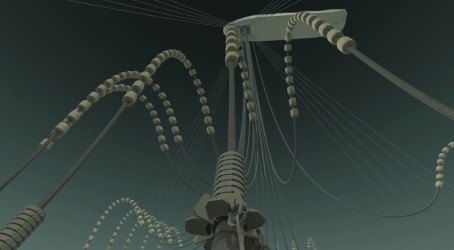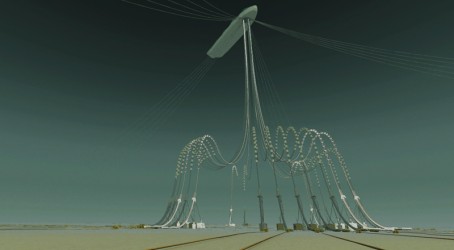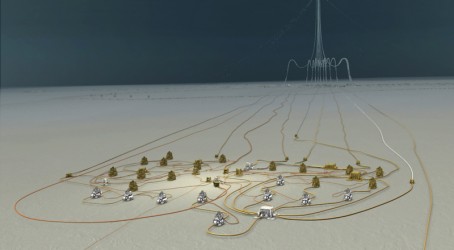Since the early 1970s and the discovery of the giant Forties oilfield, the North Sea has meant big business. The name itself has come to stand for heavy industry and oil revenue rather than simply the patch of sea that straddles UK and Norwegian territories. It has provided a thriving business for many, supported the national economy and helped establish pioneering UK companies as global leaders, tested in some of the harshest conditions in the world.
But now, with its 1999 production peak long behind it and the annual output slowly declining, the future for North Sea industry is focused on getting the most out of what remains. That task is presenting new challenges to an industry that has changed greatly in the last decade or so.
The first step to unlocking the remaining reserves, and an indicator of confidence in the North Sea’s future, is exploration. “For a number of years, exploration continued at relatively steady levels, looking either for more reserves in existing fields or new fields,” explains Mike Tholen, economics director at Oil & Gas UK, the sector’s trade association. “Last year £1.4 billion was spent on exploration, not least in places that are pretty harsh, such as west of the Shetland Islands.” However, he adds that exploration this year appears down slightly on 2010.
The search for more reserves in older wells has been a key feature of recent times and has led BP, along with several partners, to redevelop the Schiehallion and Loyal fields to the west of Shetland. This £3 billion project will see these fields, which have already produced 400 million barrels of oil since production began in 1998, yielding another 450 million barrels up to 2035 and possibly beyond.
BP will replace the existing Schiehallion floating production, storage and offloading set-up with a new-build FPSO. Come 2014, 25 wells will be drilled in the fields, in waters between 350m and 450m deep and with some of the worst weather in the world.
Dr Mark Burchell, BP’s subsurface manager on the project, explains what lies behind the discovery of yet more reserves underneath and adjacent to the two fields, of which Schiehallion is by far the larger: “What really unlocked it is the improvement in seismic technology and the way we use that so imaging of the subsurface is so much better.”
Improved technology, in acquisition of seismic data and advances in drilling, is driving the industry and is something BP has consciously worked on over the past 10 years, says Burchell. The result is a detailed picture of what is going on beneath the seabed.
“We can now, under certain circumstances, track movement of fluid in the fields using seismic mapping so we can see where the oil and gas have moved to,” says Burchell. Schiehallion is in shallow enough water to get good imaging from a conventional towed streamer, which sails a source and receiver array over the surface of the sea every two years. These surveys create what Burchell calls time-lapse, or 4D, seismic data which has become “absolutely critical to unlocking the resource base”.


Improved drilling technology is another part of the picture. Multi-lateral technology allows BP to drill into more than one well from a single well-bore. “All these techniques allow you to manage the way fluids flow round the fields and they are able to target ever more distant and smaller oil and gas pockets,” says Burchell.
Geosteering is also being used to get data from the seabed up to the surface. “Close to the drill bit you have a series of tools that send you information in real time, so we can look at the natural radioactivity of the rocks being drilled and the resistivity,” says Burchell.
This gives information on the density of the rock, effectively telling the operator what is being drilled into. “We are very accurately located, in 3D, in the sub-surface and all of this information is sent back in real time. We can translate that information into real-time drilling data and position ourselves using the seismic data to make what adjustments we need to,” he says.
One of the most significant trends affecting the North Sea in the last decade has been the rise of the small explorers as the multinationals have moved on to easier, bigger finds round the world.
Andrew Hurst, professor of production geoscience at Aberdeen University, puts this trend down to a couple of factors, not least the big companies’ sell-off about 15 years ago of fields that were passing their peak. “Those companies would say, if we go and spend £50 million in Ghana, for example, we’re more likely, for that spend, to find easier wells,” says Hurst, adding that their motivation is finding the biggest, easiest reserves. “They have a saying in oil companies that they’re always trying to shoot elephants.
“About the same time, the UK launched Promote licences. These were inexpensive licences and the idea was to stimulate investment in small companies,” Hurst continues. These smaller players had none of the overheads of bigger colleagues, such as downstream refineries, marketing and even petrol stations.
In the search for their own niches, these agile independents took on part-used sites and, occasionally, they have struck gold. “Last year Lundin Petroleum, which is a Swedish independent company, made a huge discovery in the North Sea, possibly one of the biggest ever,” says Hurst.
He quotes research that suggests there are almost 500 undeveloped oil and gas fields on the UK Continental Shelf. “That’s not to say those wells will make lots of money, but they are there. It’s surprising how much is out there,” says Hurst, who feels there are yet more big fields to be found. Another substantial discovery was announced in mid-August when Statoil, the Norwegian energy company, claimed a find of between 500 million and 1.2 billion barrels, one of the biggest in the world this year and one of the 10 largest found on the Norwegian Continental Shelf.

A subject that all in the industry seem to agree on is reaction to the surprise tax increase in March, up to 81% for fields discovered before 1993 and 62% for sites started since. “I know no one was expecting that tax hike,” says Hurst. “It doesn’t affect the likes of BP and Shell but it does hit smaller companies. All of them have put projects on hold.”
Tholen of Oil & Gas UK says the tax rise has made a tricky business environment even tougher. “Over the past 10 years, the costs of doing business and developing new business have doubled. We have seen three significant tax increases in nine years.
“Every time it changes people’s perception of the UK as a place to invest in,” says Tholen. “A lot of companies made investment after assurances in the previous budget and some of them have had their fingers burnt.”
But, on the whole, the North Sea industry appears to be in rude health, with BP’s activity alone demonstrating significant belief in the area. “This is a bit of a golden patch for BP. And these are mega-projects. The North Sea is not on its last legs. It will still be going in another 30 years,” says Burchell.

Small is bountiful
Ian Sharp, chief operating officer of Fairfield Energy, one of the new breed of small, independent oil exploration companies, claims his firm is unique in how it has targeted fields in the North Sea alone. Formed in 2005, it has built up a portfolio of assets in 24 blocks through acquisitions and licensing rounds. “We’re moving into areas the big groups no longer see as core,” says Sharp.
He believes the North Sea hosts “major investment opportunities”. Although they are all small – containing millions of barrels, rather than billions – there are many reservoirs still to be fully exploited, he says. One such example is Fairfield’s Crawford assets. “That was originally built in 1985 and development wasn’t successful, partly due to problems with the floating vessel, so production ceased fairly quickly.
“We know it is practical thanks to new technology, and our seismic data shows that there are new reserves there,” says Sharp.
Another trick is to develop tie-backs so as to reduce the number of platforms needed by connecting active reservoirs to existing, but underperforming, rigs.
Sharp says this is the plan for Fairfield’s assets in the Darwin field. “That was originally designed for 180,000 barrels a day, which we’re not going to get out of it, so there’s capacity there we can use,” he explains.
He predicts that the smaller firms will grow. “We believe there will be more restructuring in the North Sea and there will be many more of these opportunities.”
He adds that commercially sensitive negotiations are already under way. “There have been assets offered by the majors and we’re actively looking at them.”